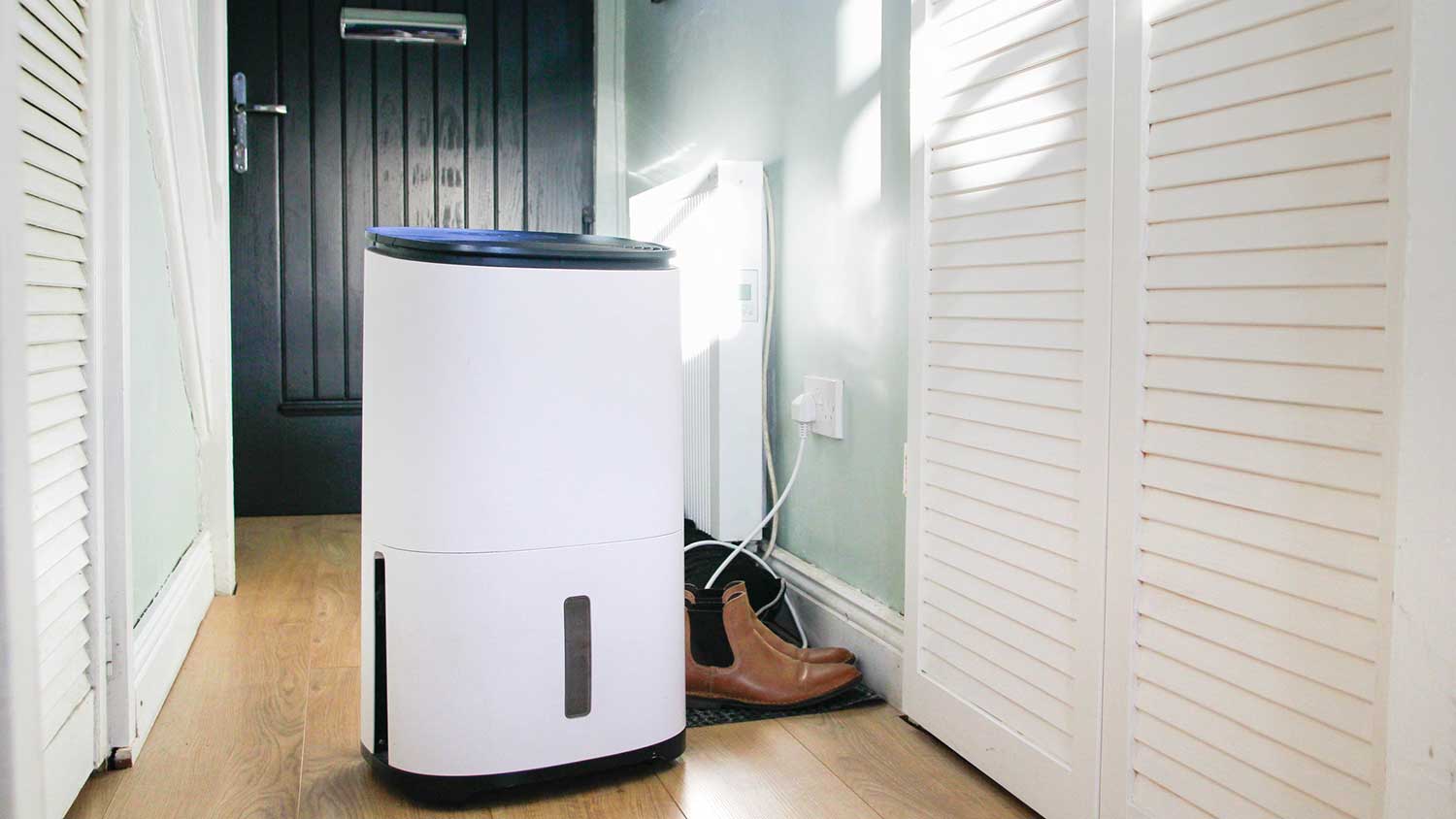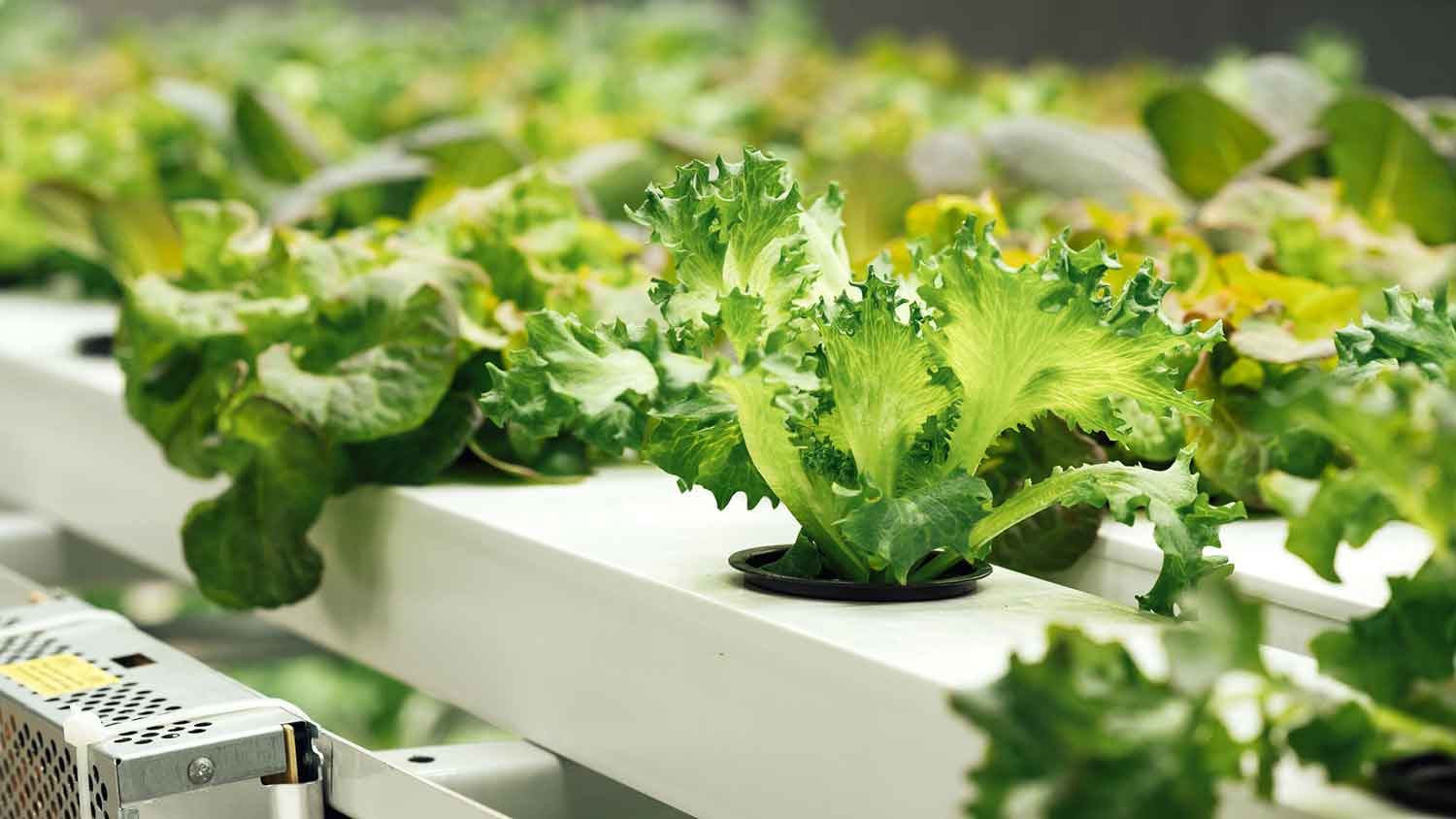How to Clean an Air Conditioner Filter Like a Pro
Keep the fresh air flowing


Your air conditioner filter plays an important role in your home, but it’s probably not at the forefront of your mind when it comes to your regular chore list. But neglecting your air conditioner filter could lead your HVAC system or air conditioning unit to blow dirt, debris, allergens, and even mold spores throughout your home. If your home seems to get dusty faster than usual, it could be a sign that it’s time to clean your AC’s air filter. Here’s how to clean an air conditioner filter quickly and easily.
Why Do I Have to Clean the Air Conditioner Filter?
Air conditioner filters help filter out dust and other debris, so these pollutants aren’t impacting the air we breathe inside our homes. But if the filter fills up with dust, these particles could build up and then start spreading throughout your home. This means your indoor air quality will worsen, and poor air quality can cause headaches, irritation of the eyes, nose, and throat, and even dizziness, according to the U.S. Environmental Protection Agency.
Not only that, but a dirty air filter makes it harder for the unit to run, leading to an uncomfortable room temperature and higher utility bills. An AC with a clean filter can save up to 15% of its energy usage compared to one with a dirty filter.
How Much Does It Cost to Clean an AC Filter?
Cleaning just an air conditioner filter will cost little to no money. You’ll just need a vacuum, some water, and white vinegar. But if you want a deeper clean, you’ll spend around $275 to $500 for the cost of air duct cleaning.
When to Clean an Air Conditioner Filter

In the high heat of summer, you’ll want to clean your air conditioner filter at least once per month. For homes with pets, you may want to check the filters even more frequently, about every couple of weeks, and clean if you notice dust. You can also opt to inspect and clean your air conditioner filters more often if you like to keep your AC running around the clock.
While some air conditioners have washable filters, also known as electrostatic filters, it’s important to note that other units may use disposable filters. You will need to change disposable AC filters about once a month, or up to every three months if the AC is used infrequently. Don’t try to clean disposable filters, which when wet could encourage mold growth.
5 Steps to Clean an Air Conditioner Filter
Cleaning a washable air conditioning unit is an easy task for homeowners, even if you don’t have a decked-out toolbox or a lot of experience with DIY projects.
1. Turn Off the AC Unit
First, you’ll need to make sure the AC unit is off before you start cleaning. If you leave the air conditioner on, it will blow unfiltered air, potentially full of allergens and other polluting particles, throughout your house.
Once you hit the AC switch, give it time to fully shut off before you locate and remove the filter.
2. Remove the Filter

Next, you’ll need to remove the filter from the air conditioning unit. The location of the air filter may depend on the type of air conditioner.
Air filters for central air conditioners are typically near the return vent, either in a ceiling, wall, or floor. There could be multiple air filters, so check all the vents before you start cleaning. The air filter may also be in the main air conditioner unit. For wall mounted AC units, ceiling units, or window units, the air filter is usually within the unit’s grill, where the air blows into the room.
You may need a screwdriver to remove the vent or grill to access the air filter, or the filter may be pulled out from a handle.
3. Vacuum the AC Filter
Use a handheld vacuum, or a vacuum attachment, to clean off the dust and debris buildup from the filter and around the frame of the filter. If your filter isn’t very dirty to begin with, vacuuming may take care of the dust, and you can return the filter and turn the AC unit back on. But if you still see debris, you’ll need to give the filter a deeper clean.
4. Rinse and Dry the Filter

After removing the bulk of the debris with a vacuum, you can thoroughly clean out the filter with just some water and white vinegar.
Fill a sink, tub, or large container with equal parts water and vinegar.
Place the electrostatic filter in the water and vinegar.
Let the filter soak for one hour.
Rinse the filter with the faucet, a handheld showerhead, or garden hose on a low setting. Don’t use high-pressure water, which could damage the filter.
Sit the filter upright against a hard surface, and let one side air dry for about three hours.
Flip the filter around, and let the opposite side dry for another three hours.
5. Reinstall the Filter
Once the filter has dried completely, check it for any signs of damage, like holes or tears. If you see any damage, or if the filter still looks dirty after vacuuming and washing it, it’s time to order a replacement. Otherwise, place the filter back in its designated spot in the air conditioner unit. With the filter clean, you may also want to clean the entire air conditioner to help it run as efficiently as possible.
AC Filter Maintenance
Dirt and dust buildup in an air conditioner filter are natural, but letting the AC unit remain dirty can be costly. In addition to making the unit less efficient and increasing your cooling bills, the unit can wear down faster. Then, you’ll have to pay the cost to install a new AC unit.
To make sure your air conditioner lasts longer, some simple maintenance about once a month will pay off.
Inspect Regularly

If you like to keep your home at a crisp 68°F throughout the hotter months, you’ll want to make sure you’re inspecting the unit often, about every two weeks, for debris buildup as well as any visible damage. If you use the air conditioner unit less frequently, inspect it about once a month or every few months at a minimum to ensure the AC unit is functioning properly.
Clean the Air Conditioner
While cleaning the air conditioner filter is important, you’ll also need to clean the AC unit coils and fins, as well as other parts of the unit. For central air conditioning, check around the outside of the unit for leaves, branches, or other debris. Remove large objects from the area, then use a hose on a gentle setting to clean off the rest of the unit. For room air conditioners, use a damp microfiber cloth to clean the AC unit, and follow up with a dry microfiber cloth.
Winterize the AC Unit
When winter is around the corner, it’s time to power down the air conditioner. But if you want to keep the unit in good working condition, you may need to remove it or cover it until the following spring or summer.
To winterize window AC units, remove the unit and store it in a cool, dry place, like the garage. For central air conditioners, consider covering the AC unit for the winter.
DIY vs. Hiring a Pro
Cleaning an air conditioner filter is an easy DIY project, even for beginners. With only a few tools and supplies, you can clean an air conditioner filter in a matter of minutes.
Of course, if you don’t have the time to clean the air filters or you suspect something else is wrong with your air conditioner, you should hire an air conditioning repair service near you. The pros will be able to quickly clean the air filter and inspect for any potential issues with your AC unit.
Frequently Asked Questions
For washable or electrostatic air conditioner filters, you can soak and rinse them with water. If you rinse the filter with water, make sure to use a faucet, shower head, or garden hose with a gentle water pressure setting, as strong water pressure could damage the filter.
But for disposable filters, water could ruin the filter, even allowing mold to grow in the filter. Instead, these filters should be replaced.
Your air conditioner can temporarily run with a dirty filter, but it won’t work as efficiently. It will need to work harder to blow cool air throughout the room or house, and this can eventually cause the air conditioner to overheat or die prematurely. It’s much more cost-effective to clean or replace filters than to pay higher utility bills each month and replace the entire AC unit more often.





- Furnace Repair
- Air Conditioning Repair
- HVAC Repairs
- Furnace Installation
- Wood & Pellet Stove Repair
- Dehumidifier & Humidifier Repair
- Heat Pump Companies
- Swamp Cooler Repair
- Wood Stove Services
- HVAC Companies
- Commercial A/C Repair
- Geothermal Installation
- Air Conditioning Installation
- Boiler Repair
- 24 Hour Furnace Repair
- Geothermal Repair
- Heat Pump Repair
- Humidifier Installation
- Thermostat Repair
- Thermostat Installation
- Nest Installation
- Heating & Cooling
- Heating Repair
- Furnace Cleaning
- Furnace Tune-Up
- HVAC Technicians
- Subcontractors
- Furnace Maintenance
- Plumbing & Heating Companies
- Wood Stove Inspection
- Mini Split Installation
- Wall Heater Repair
- Duct Installers
- How to Clean Your AC So It Runs All Summer Long
- Can I Run My AC Without a Filter? 5 Reasons It Might Not Be the Best Idea
- 5 Reasons Your AC Is Freezing Up and How to Fix It
- 3 Reasons Your Air Conditioner Filter Is Wet (and How to Fix Each One)
- The Must-Have Air Conditioner Maintenance Checklist to Keep Your AC Humming Along
- How Do I Keep My Home's Second Floor Cool?
- 11 Reasons Your AC Is Blowing Hot Air
- How to Prevent Mold Growth in an Air Conditioner
- Do Air Conditioners Use Water? They Don’t, So Here’s What That Puddle Is
- 9 Types of Air Conditioners: Pros, Cons, and How to Choose










